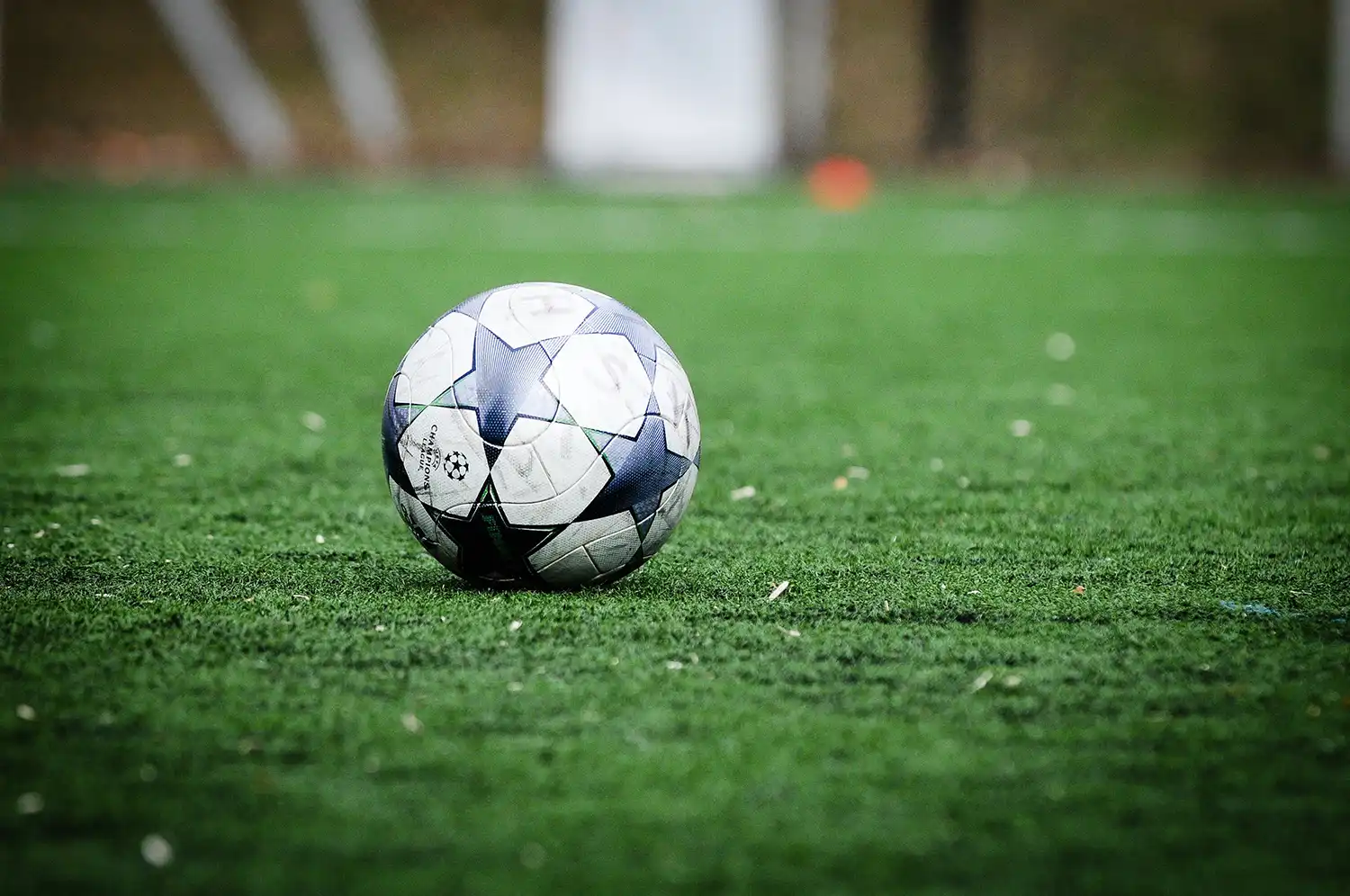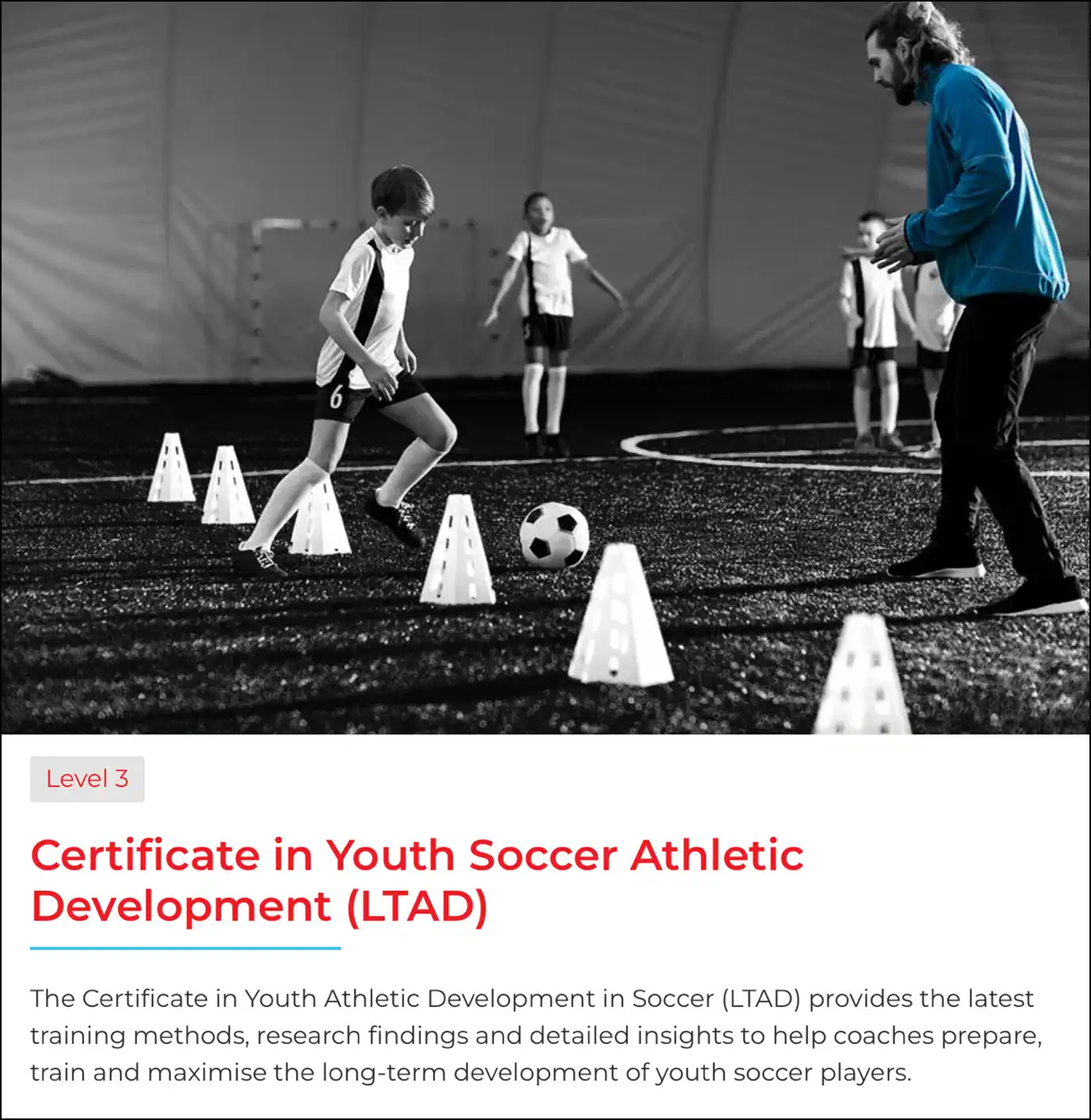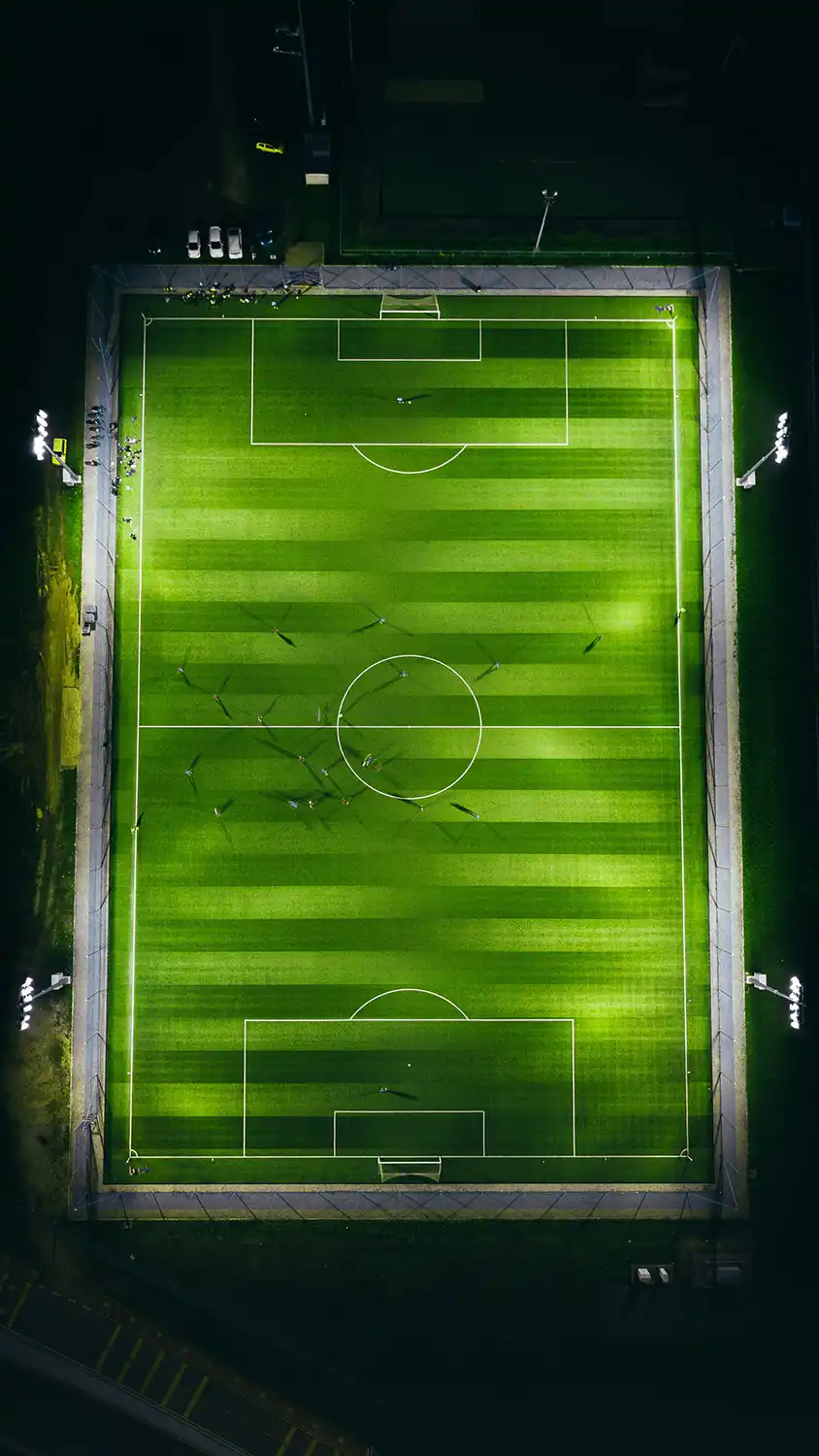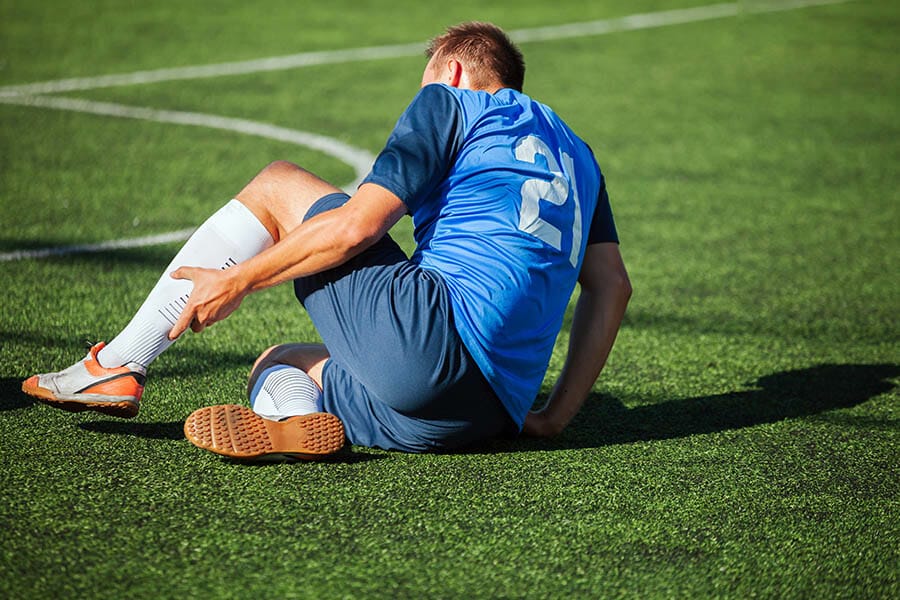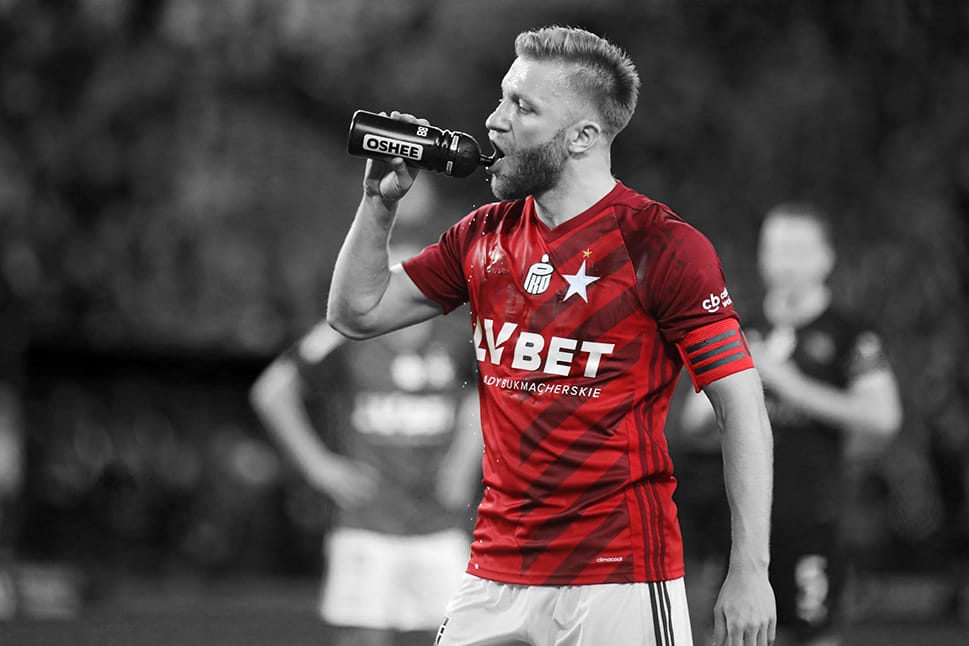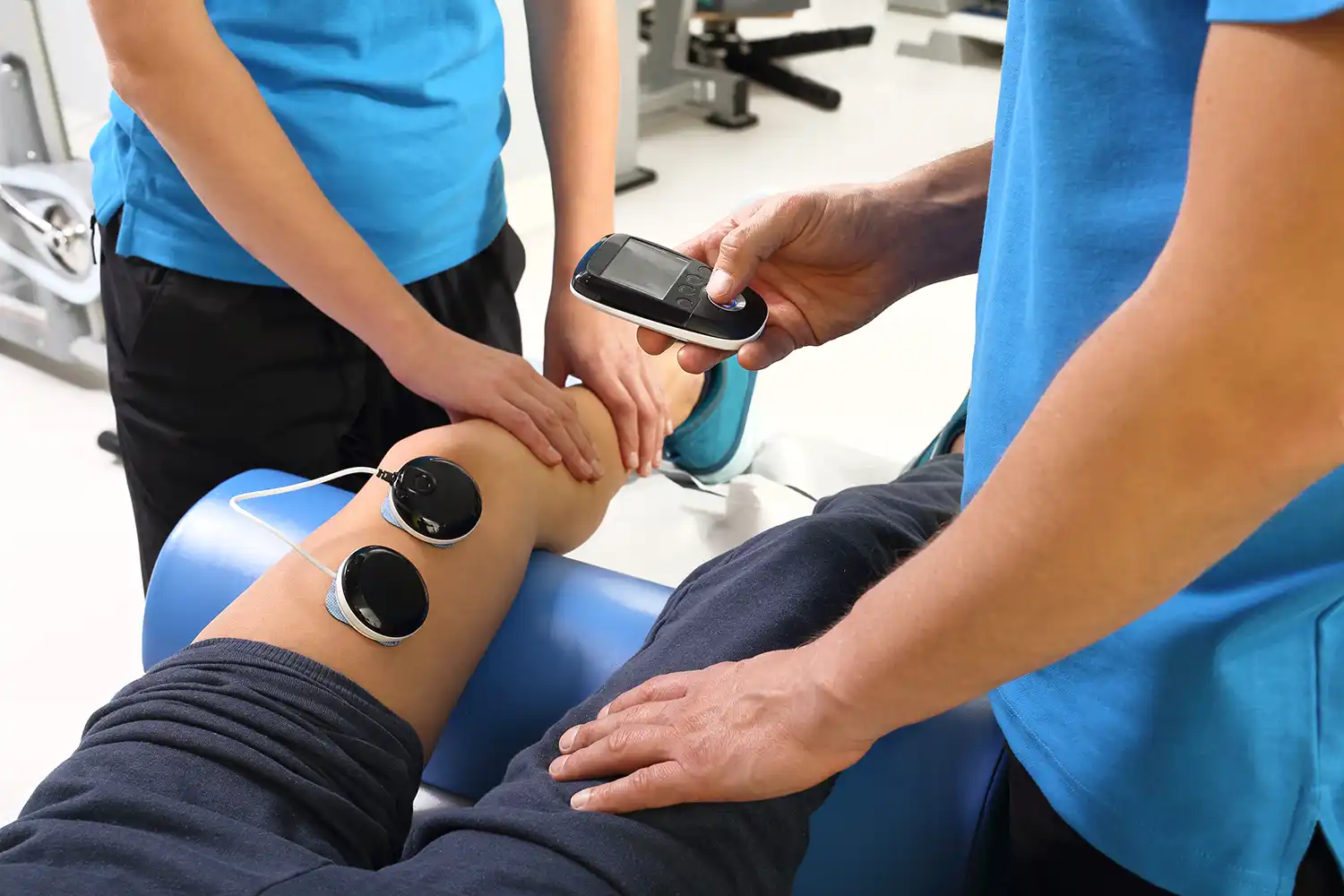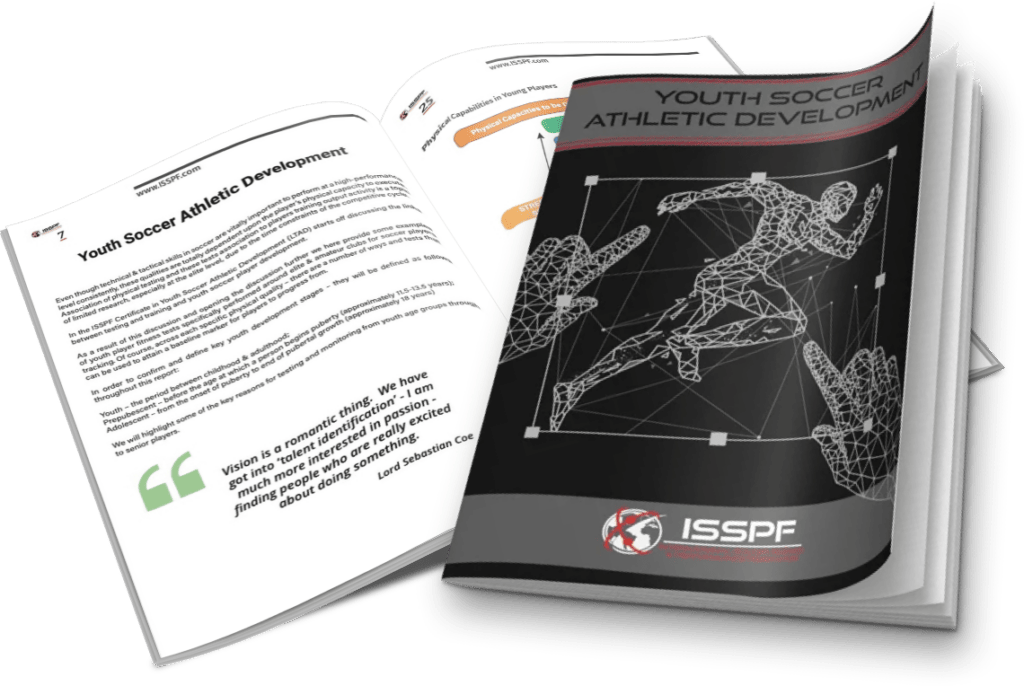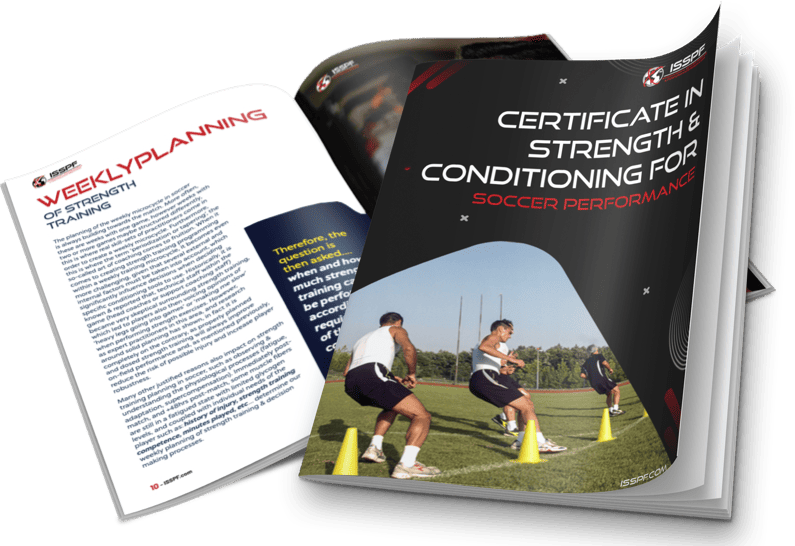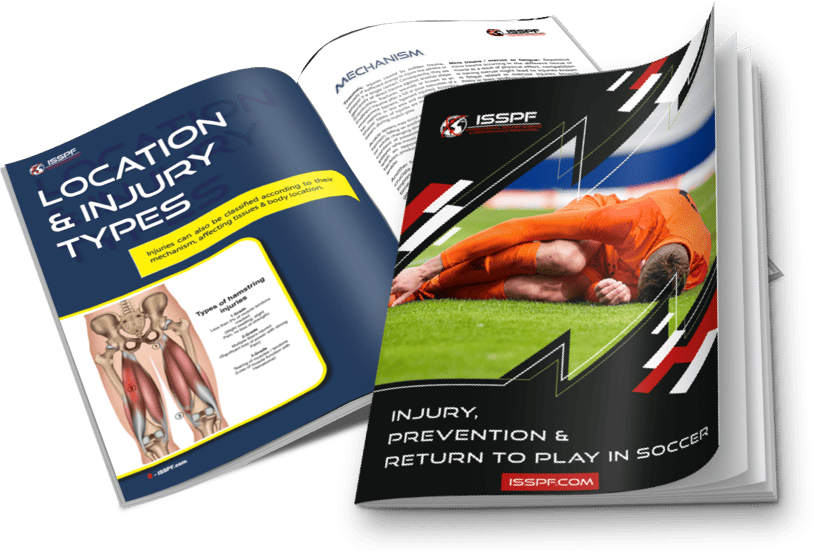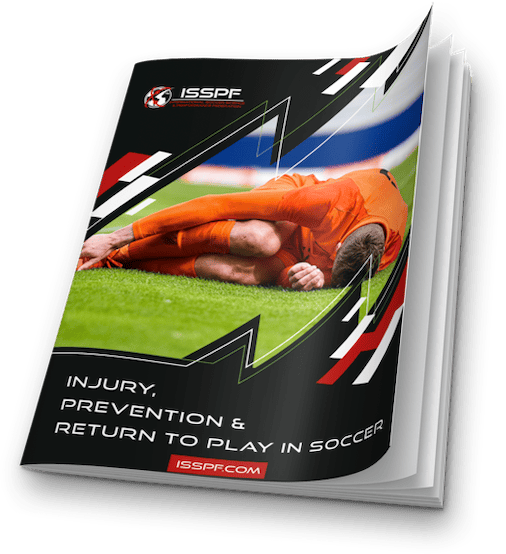Author: Alex Bevens (Lead Academy Sport Scientist)
In the dynamic world of professional football, the development of young athletes is a multifaceted process that requires careful consideration of physiological factors, growth, and maturation (Bompa & Haff, 2009).
The integration of different conditioning methods such as isolated running, off-feet conditioning (e.g., cycling and ski ergometers), along with various-sided games, plays a crucial role in optimising the performance of U16, U18, and U21 age groups.
Throughout youth football, a predominantly game-based approach to fitness enhancement should be applied; concurrently achieving improvements technically, tactically, psychosocially, and physiologically (Rampinini et al., 2007; Owen and Ford, 2004).
However, where necessary a hybrid approach may be required, which involves isolated conditioning methods. Although internal load response is somewhat similar in game-based conditioning compared to running alone, there is justification of the latter due to certain load responses not attainable for a whole squad at once during game-based interventions (Hill-Haas, 2011; Dellal et al., 2008).
Equally, despite the similarity in internal response, external load demands can be vastly different in game-based conditioning and intermittent running, for example. The decision to include such conditioning sessions should be as a result of consultation with multidisciplinary staff and largely depends on a player’s weekly schedule, cycle within the season and individual requirements.
Youth Soccer Athletic Development Course – CLICK TO START
This article explores the significance of varied conditioning sessions, incorporating High-Intensity Interval Training (HIIT) above VO2 max intensity, as well as sessions at and below the anaerobic threshold, through a range of conditioning tools.
Additionally, we will briefly delve into the impact that growth and maturation has on planning, using Lloyd’s Youth Physical Development model as a guide, and reference research conducted on the impact of game-based training versus isolated conditioning on internal load response (Lloyd and Oliver, 2012).
Conditioning Sessions for U16 Age Group
Various-sided games provide an excellent platform for conditioning in the U16 age group, combining skill development with cardiovascular fitness.
There is also the added benefit due to the proposed ‘window of opportunity’, with anaerobic capacities being stretched, resulting from the increased hormonal response during peak height velocity (PHV).
Research highlights the internal load response to various-sided games, showcasing their effectiveness in eliciting physiological adaptations alongside the technical and tactical elements of football (Ouertatani et al., 2022; Owen et al., 2012; Dellal et al., 2011).
Training sessions need to be adjusted based on individual differences in maturation rates. Early maturing players may require more advanced conditioning, while late maturing players might still be developing foundational aspects of physical fitness.
For a player that may be estimated to be circa-PHV, an option to optimise extra conditioning may be wise to be done off-feet, alleviating any added joint load, and thus reducing potential injury risk. Using something relatively simple such as rating of perceived exertion is useful for prescription of intensity at this age group.
Example Session:
- 4v4 small-sided game with short, intense rounds (1-3 minutes each).
- Emphasis on high-intensity sprints and quick decision-making.
- Transition into 2v2 mini games focusing on anaerobic efforts.
- Off-feet conditioning: 6×3 minutes (40-seconds @ 5/10RPE | 10s @ 8/10RPE | 10s Rest), 1 minute rest.
Conditioning Sessions for U18 Age Group
As players progress to the U18 age group, game-based training becomes integral for refining tactical skills but also to overload the physical stimulus aiming to increase aerobic and anaerobic capacities.
HIIT sessions that push players above their VO2 max intensity become crucial for developing the explosive bursts of energy required in football.
Additionally, incorporating sessions at and below the anaerobic threshold helps improve the players’ ability to sustain high-intensity efforts over the course of a match. Therefore, within training sessions it would be prudent to utilise various internal load monitoring tools to ensure the adequate physiological stimulus is applied.
It can be argued that players within both the U16 and U18 age groups should participate in regular isolated conditioning lead by S&C practitioners, due to their inept ability to simultaneously achieve tactical competency and the required physiological response.
Example Session:
- 6v6 medium-sided game with modified constraints (e.g., limited touches, time restrictions).
- Emphasis on high-intensity efforts and maintaining possession. Transition into 3v3 games with increased pitch size, focusing on sustained efforts at and below the anaerobic threshold.
- Isolated/off-feet conditioning: >8-10 minutes @ ≥Maximal Aerobic Speed (MAS) via short interval methods i.e., 15 seconds @ 120% MAS, 15 seconds passive rest.
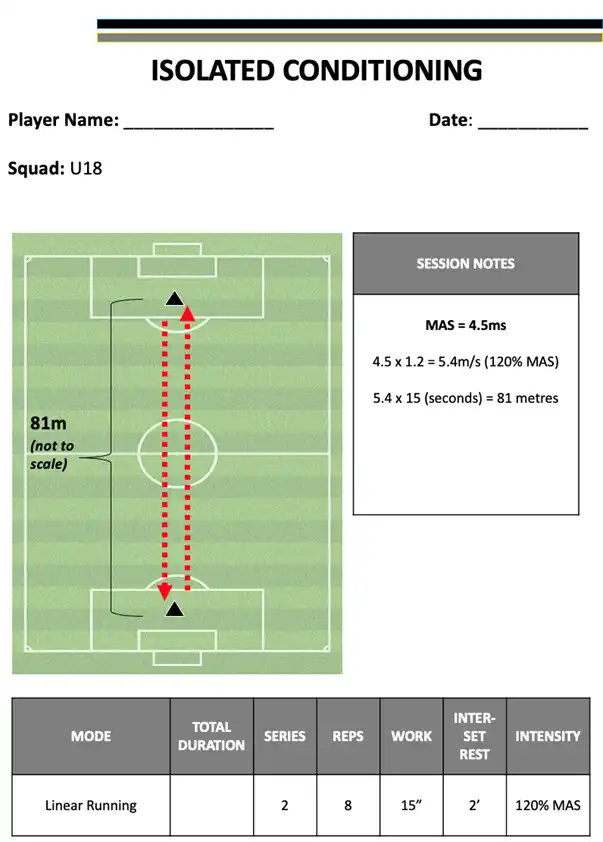
Conditioning Sessions for U21 Age Group
The U21 age group represents the bridge between youth development and professional football. Conditioning sessions at this stage should focus on maintaining peak performance, while fine-tuning technical and tactical skills. Players should, throughout the course of the season, be exposed to peak physical demands of match play and not just the average intensity.
Isolated and game based HIIT sessions should remain a staple, addressing technical and tactical proficiency as well as conditioning requirements (Baker, 2011). Such sessions should be balanced with a mix of intensity above VO2 max and sessions at and below the anaerobic threshold.
Supplementary sessions, whether off-feet or pitch-based, should be prescribed for the non-starter & non-playing squad group of players to ensure adequate physical overload is accomplished. Individualised conditioning should be informed from physical profiling.
Using work by Sandford, Laursen and Buchheit (2021), practitioners are able to obtain the anaerobic speed reserve (ASR) of their players and plan conditioning accordingly based on the players’ profile.
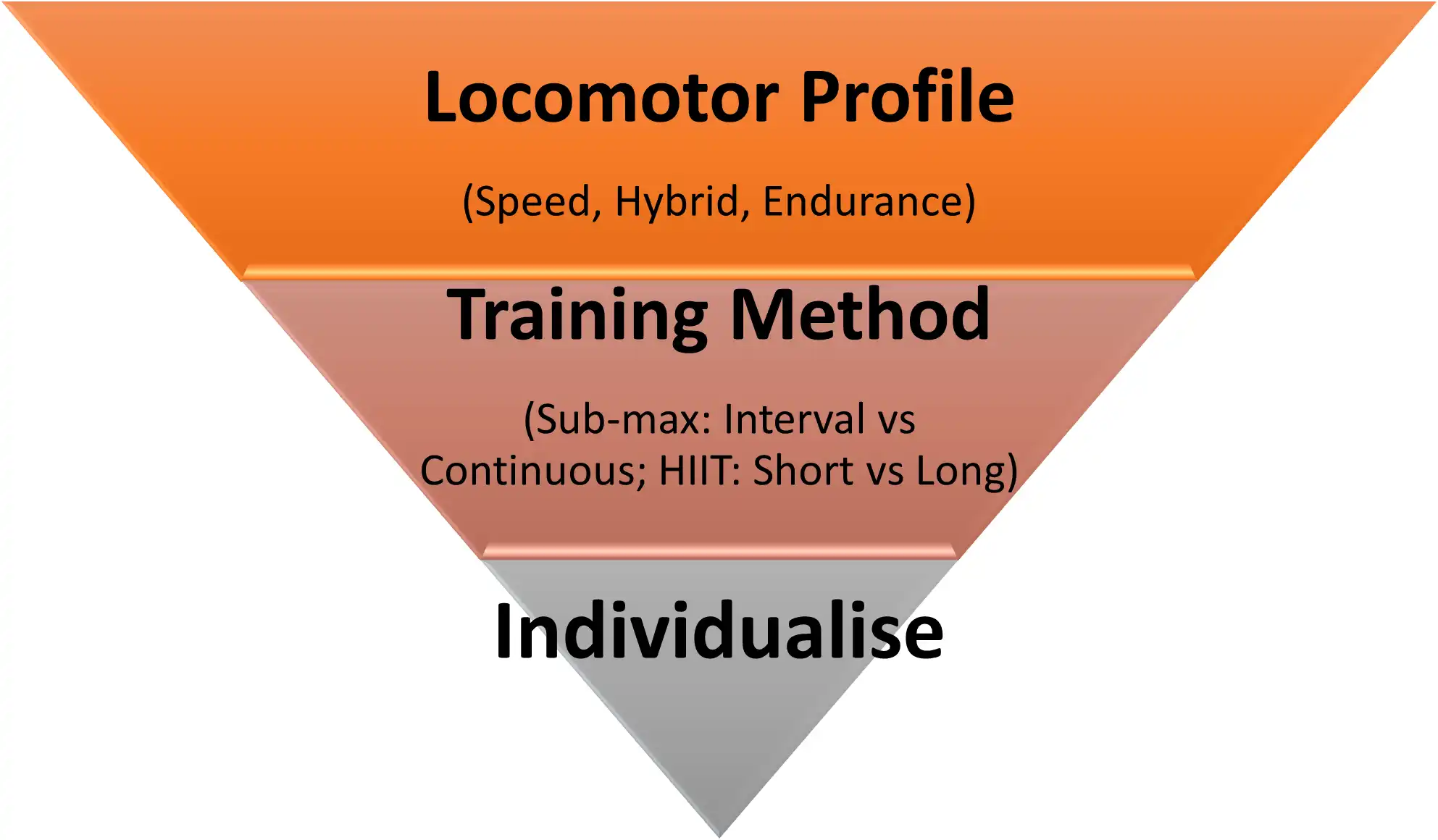
- Identify locomotor profile of your athlete.
- Select training method for sub-max and HIIT training.
- Individualise the session based on the fitness capabilities of the athlete.
Although it is likely that players within this phase of development have achieved their adult stature, individualised planning should take place as players in the U21 age group may exhibit diverse maturational statuses still.
Those who matured early may have reached their peak physical development, while late maturing players may still be progressing. Tailoring training sessions to individual needs can optimise performance and minimise the risk of injury.
Example Session:
- 8v8 medium-sided game with high-tempo play and quick transitions.
- Incorporate intervals of increased intensity (HIIT) with shorter recovery periods; exposing players to peak external load demands.
- Rotate between different-sided games across a training block to vary internal load response, as well as pitch dimensions.
- Isolated/off-feet conditioning: Speed Profile à (2×6) 6-seconds Sprint, 24-seconds Rest. Inter-set recovery = 3-minutes; Endurance Profile à 4-6×3-minutes @ 85% MAS, Inter-set recovery = 1.5-minutes
Conditioning During Rehabilitation
Top-Down Fitness Modelling
To optimise conditioning during injury rehabilitation, it’s crucial to design a well-structured microcycle that strategically incorporates both intensive and extensive conditioning sessions on separate days.
It should also allow for different conditioning tools to be utilised based on the stage of their rehabilitation. The microcycle, typically a one-week training cycle, aims to provide a balanced approach to maintain overall fitness levels while accommodating the specific needs of the injured player.
For instance, one day may focus on intensive conditioning using the ski ergometer, emphasising short bursts of high-intensity effort to stimulate cardiovascular fitness and muscular endurance without the impact on lower extremities.
On alternate days, extensive conditioning sessions on the stationary bike can be implemented, promoting longer durations of aerobic exercise to enhance overall cardiovascular health.
Referencing the work of Bompa and Haff (2009) on periodisation principles, this fluctuation between intensive and extensive conditioning aligns with the concept of training variations within a microcycle, allowing for targeted adaptations and minimising the risk of monotony or overtraining.
By carefully planning and adjusting the microcycle based on the specific injury and the athlete’s progress, coaches can ensure a progressive and effective off-feet conditioning programme that supports recovery and minimises the impact on the injured area.
Conclusion
Incorporating diverse conditioning methods, in a professional football club’s youth development programme is essential for nurturing well-rounded players. The integration of sessions that are isolated, off-feet or game-based caters to the specific demands of each age group.
Practitioners should be conscious that each conditioning modality will have distinctive effects on joint loading, internal load response, and to what degree it can be individualised. Lloyd’s Youth Physical Development model, combined with the well-studied insights into internal load responses, allows clubs to optimise the physical and technical development of their young athletes. Aligning conditioning strategies with the stages of development and individual maturation rates ensures a holistic approach.
Join Our Soccer Performance Course
Whether you’re a Coach looking to squeeze the maximum potential from your team, or a Graduate looking to advance your career in soccer, these hyper-focused, certified online soccer courses give you the very latest performance strategies, tactics and coaching methodologies used by the world’s elite coaches.
Inside each of these ground-breaking accredited courses, you’ll find the tools, techniques, and templates you need to keep ahead of the curve and get the performance and longevity from your players that translates to victory on the pitch.
Be the difference your team needs by elevating your knowledge and skills in Nutrition, Psychology, Strength & Conditioning, Goalkeeper Coaching, Injury Prevention, and more.
Click to see our full range of soccer sports science courses
References (click to expand/close)
Article References
Bompa, T.O. and Haff, G.G., 2009. Periodization. Theory and methodology of training, 5.
Baker, D., 2011. Recent trends in high-intensity aerobic training for field sports. Prof Strength Cond, 22, pp.3-8.
Dellal, A., Chamari, K., Pintus, A., Girard, O., Cotte, T. and Keller, D., 2008. Heart rate responses during small-sided games and short intermittent running training in elite soccer players: a comparative study. The Journal of Strength & Conditioning Research, 22(5), pp.1449-1457.
Dellal, A., Owen, A., Wong, D. P., Krustrup, P., Van Exsel, M., Mallo, J., & Chamari, K. 2011. Technical and physical demands of small vs. large-sided games in relation to playing position in elite soccer. Human Movement Science, 30(4), 957-969.
Hill-Haas, S.V., Dawson, B., Impellizzeri, F.M. and Coutts, A.J., 2011. Physiology of small-sided games training in football: a systematic review. Sports medicine, 41, pp.199-220.
Lloyd, R.S. and Oliver, J.L., 2012. The youth physical development model: A new approach to long-term athletic development. Strength & Conditioning Journal, 34(3), pp.61-72.
Ouertatani, Z., Selmi, O., Marsigliante, S., Aydi, B., Hammami, N. and Muscella, A., 2022. Comparison of the physical, physiological, and psychological responses of the high-intensity interval (HIIT) and small-sided games (SSG) training programs in young elite soccer players. International journal of environmental research and public health, 19(21), p.13807.
Owen, A., Twist, C. and Ford, P.A.U.L., 2004. Small-sided games: The physiological and technical effect of altering pitch size and player numbers. Insight, 7(2), pp.50-53.
Owen, A., Wong, D. P., Dellal, A., & Paul, D. 2012. Effect of small-sided games on internal load and physiological responses in various-sided games.
Rampinini, E., Impellizzeri, F. M., Castagna, C., Abt, G., Chamari, K., Sassi, A., & Marcora, S. M. 2007. Factors influencing physiological responses to small-sided soccer games. Journal of Sports Sciences, 25(6), 659-666.
Sandford, G.N., Laursen, P.B. and Buchheit, M., 2021. Anaerobic speed/power reserve and sport performance: scientific basis, current applications, and future directions. Sports Medicine, 51(10), pp.2017-2028.
Share this article:
